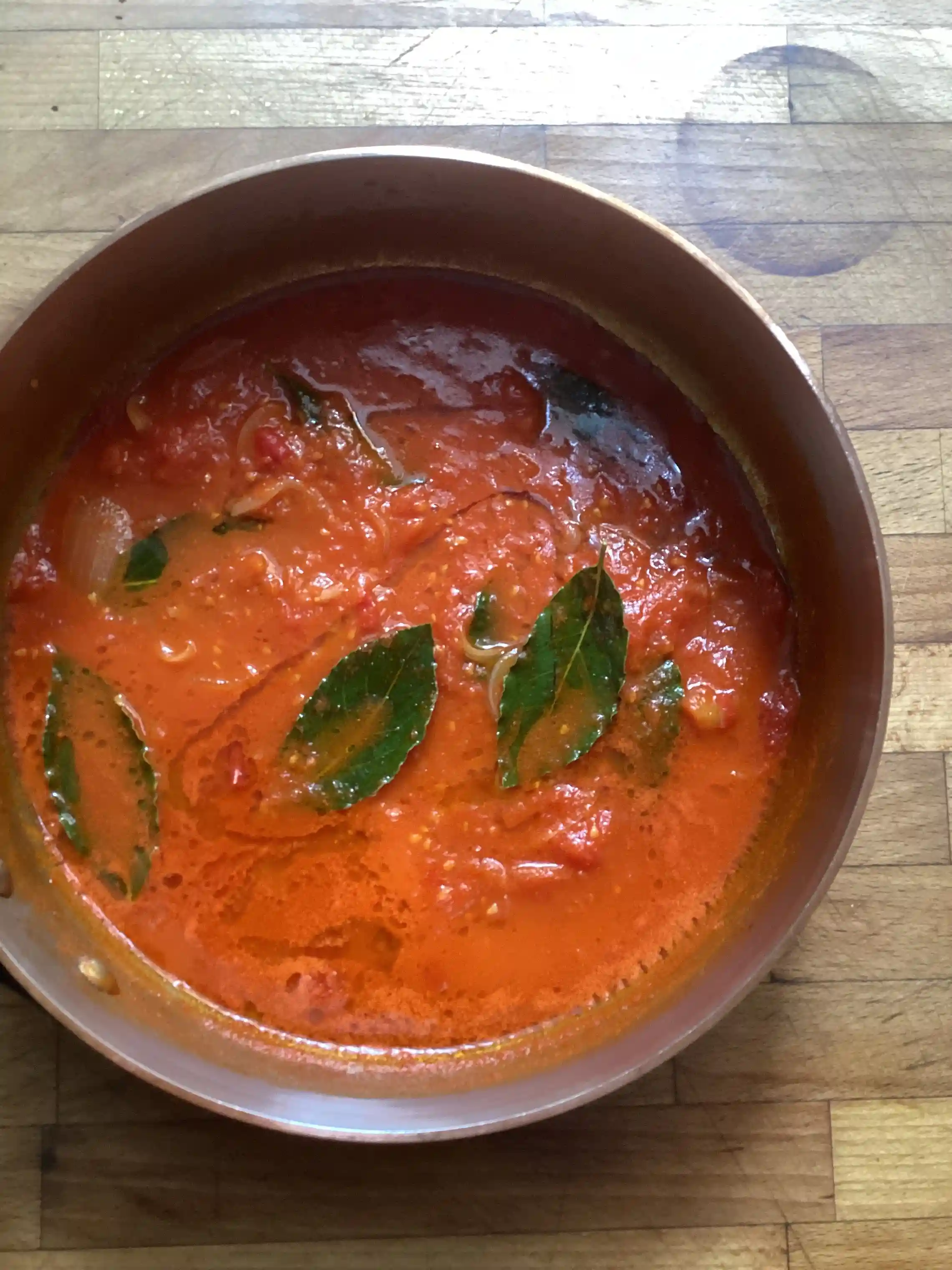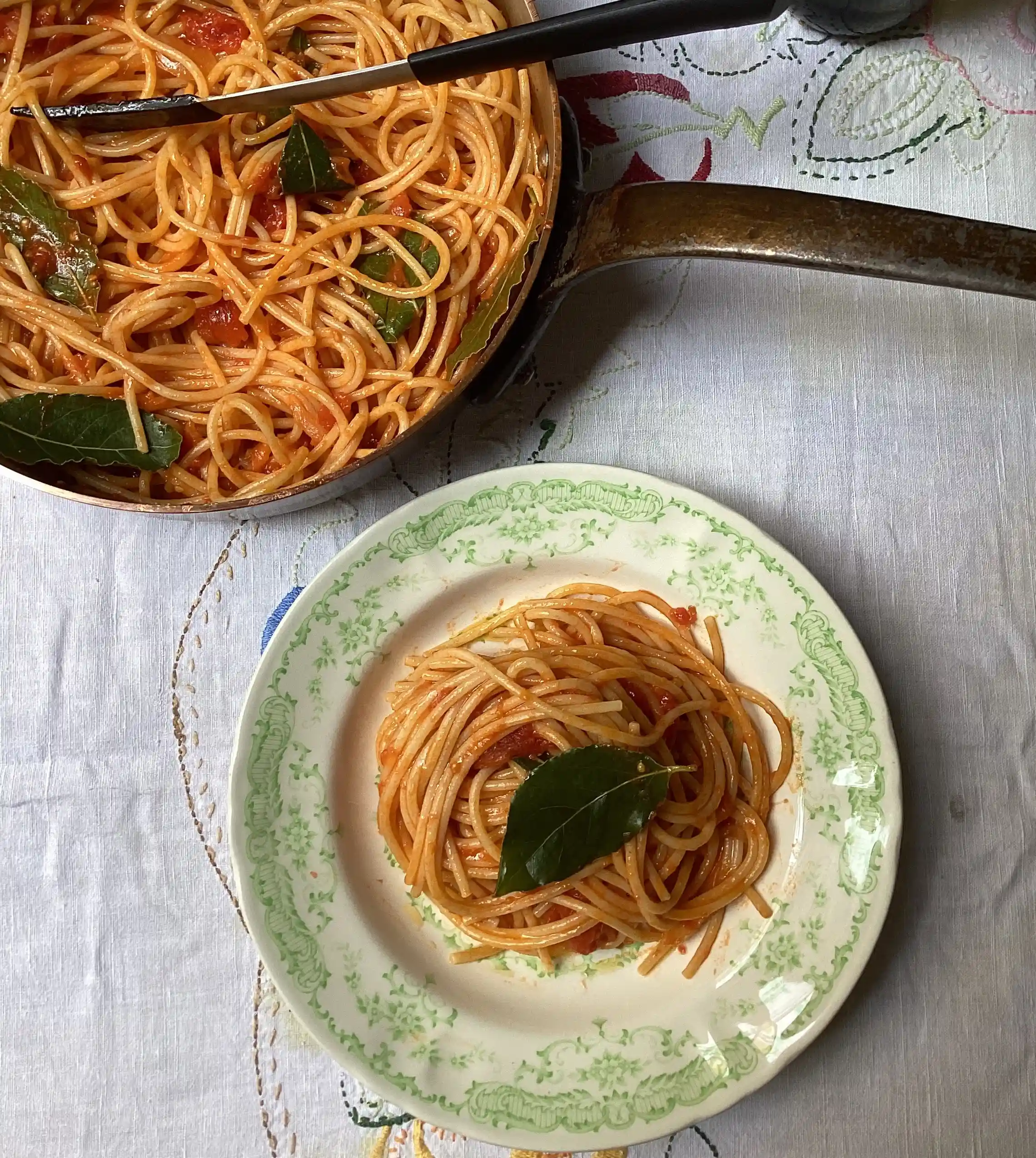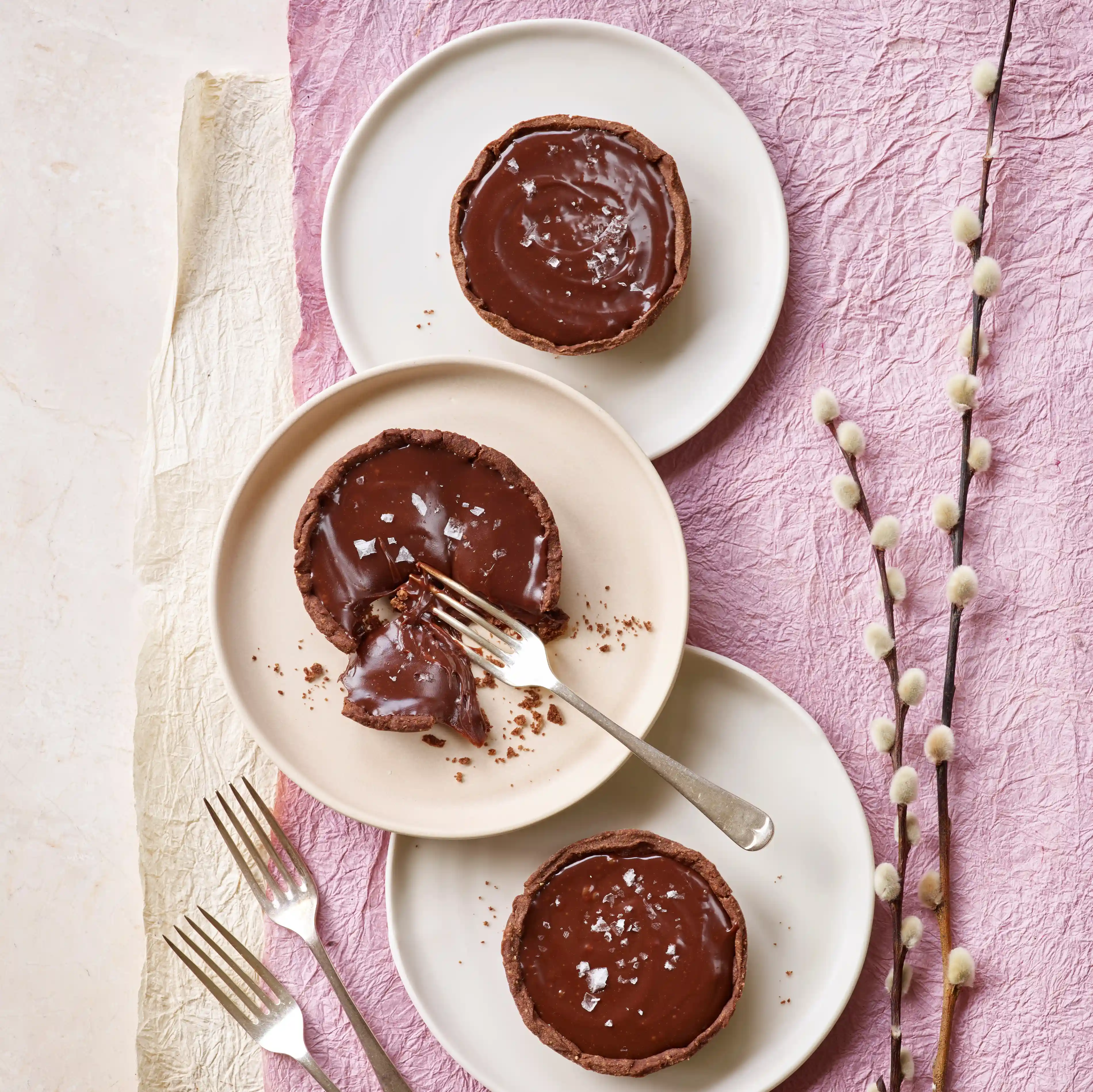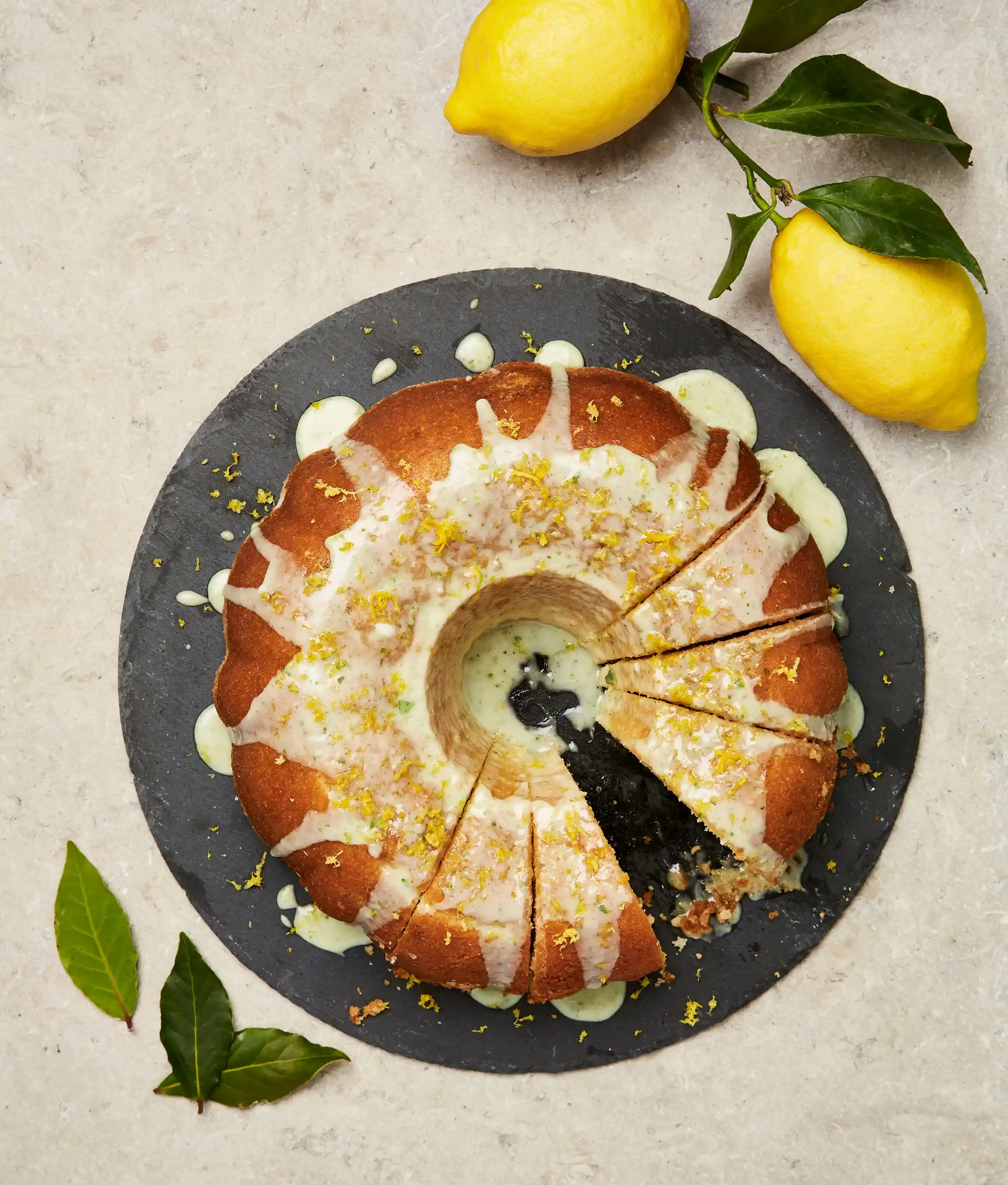Bay leaves
- rosemary
- Feb 26, 2024
- 8 min read
"Bay leaves are the burnt-orange flares of the herb world. Once, like curly parsley, they were everywhere. And then they weren’t." Matt Preston

In my garden I have a bay tree in a large pot. It somehow almost thrives, in spite of my almost completely ignoring it. It gets the occasional bit of watering courtesy of David, but I never feed it and something digs holes all around it, quite frequently. So I love it. Most other things just die on me although I will admit that it's my fault. However, it's not just outside the kitchen door, and so I do tend to forget about it.
Recently, if you remember I grilled some pork chops au Robert Carrier which contained some bay leaves in the marinade. I wrote it up in a blog called Old-fashioned grilling. The pork chops were surprisingly delicious for such a simple dish and I think it was all down to the bay leaves. There was a subtle background flavour, that you couldn't really put your finger on and yet it made it. So I decided I would write about bay leaves.

The bay tree is one of those mythical trees, which may explain why slightly mad people using it to manifest their desires. Do something magical with it, think of what you want and you will get it. Alas for Apollo though, who is responsible for the birth of the bay tree, it didn't work out for him (Daphne neither really) as Rachel Roddy amusingly describes:
"the nymph Daphne is pursued by the god Apollo, intoxicated by Cupid’s arrow. To avoid him, she turns herself/is turned into a laurel tree, at which point he makes the tree into a sacred symbol (one of his many god roles was to make mortals aware of their own guilt and purify them of it). As well as being a creep, Apollo was an archer and athlete, and was also associated with music and poetry. This is why a laurel crown twisted from his sacred symbol became associated with and used to crown victorious athletes, heroes and appointed poets, and then, later, great minds and laureate/graduates. And why we are reminded not to rest on our laurels."
It is said the priestesses at Delphi burnt bay leaves and the smoke put them into their prophetic trances and in the 17th century Nicholas Culpeper was lauding it because it:
"resisteth witchcraft very potently, as also all the evils old Saturn can do to the body of man… neither witch nor devil, thunder nor lightning, will hurt a man in the place where a bay-tree is." Nicholas Culpeper
Maybe my bay tree will protect us from bush fires.
Anyway some species of bay trees (laurels) are poisonous, so be careful, although I doubt that Bunnings is going to sell you something poisonous as a herb.
Or indeed is it a spice? Well obviously not but many writers seemed to think that it's tantalising flavour, aroma, call it what you will does hover somewhere between a herb and a spice, which makes it very versatile.

"With its intense, woody, citrus aromatics, caught pleasingly between the herb world and the spice world, bay has the power to deepen flavour, to round out a dish, seasoning it subtly yet significantly." Hugh Fearnley-Whittingstall
He claims it as his favourite herb and even gave one of his daughters a middle name of Bay, so I guess we have to believe him. He also offers one of the most interesting recipes I found - Bay-spiked pears with shallots and lemon which he suggests you use with rich meats such as pork, or game, or else use them in a salad with bitter leaves, crumbled blue cheese and juices from the pan. No blue-cheese for me, but yes they would go well with roast pork.
He is also one of the best at giving general guidelines as to its use:
"Were you to pop a bay leaf into your mouth and chew it, the experience would not be pleasant. Sharing flavour compounds with both eucalyptus and cloves, bay in its neat form is bitter and harsh. But if you put the leaves next to, inside, or underneath the thing you want to eat, soak them in hot liquid, infuse them in salt, oil or fat, even set fire to them, then you're talking." Hugh Fearnley-Whittingstall
So next time you are having a fiery barbecue, throw some leaves on to the coals for extra flavour.
As Matt Preston commented in my opening quote, they are underused and underestimated these days.
"Bay is the most discreet of the woody herbs, often overlooked by the inexperienced cook, who probably wonders what exactly is the point of throwing laurel leaves into your stew only to oik them out again later." Nigel Slater

Before I had my bay tree I used to just use dried bay leaves, and because they were not used very much they gradually lost their flavour. They say if you break one and cannot smell anything then it's time to throw them out. Rachel Roddy referenced this cartoon by Mads Horwath in which one of the ladies is about to put a tiny dried bay leaf into her pot - the caption reads:
“And, to make no difference, add a three-year-old bay leaf.”
Guilty as charged - in the past anyway. Now I use fresh ones. There was a lot of controversy out there on whether you should use fresh or dried with champions on both sides and some saying freshly dried ones. Whatever you've got is the conclusion I came to, except in certain circumstances where it just has to be fresh. And you can get them from the supermarket these days anyway.
So what can you do with them? Generally speaking, Nigel Slater has some advice which is very similar to Hugh Fearnley-Whittingstall's thoughts on the subject - and many others too:
"Bay leaves take a while to give up their essential oils, which is why they are usually used in slow-cooked dishes that have plenty of moisture in them. What they offer is not so much an up-front flavour as a back note, a sort of savoury depth that is hard to pinpoint. If you doubt their point, tuck two or three into the water next time you cook rice. It is worth it for the perfume alone. My mother always put one in the rice pudding." Nigel Slater
And I will do just that next time I make some rice. If I remember. Bay leaves are a bit like those Parmesan rinds I have in the fridge - so desirable and so forgotten.
Nigel also has some other recommendations:

"Where bay leaves are really worth using with a devil-may-care attitude is with potatoes and meat. I have cooked Maris Pipers, thinly sliced, with whole leaves and cream, and this week let six of them infuse in the warm milk for mashed potatoes to give a sloppy, slightly herbal puree. Steeping pork in a marinade of olive oil and bay gives a fine roast, and that delicious yet curiously unattractive Italian dish of pork that has been allowed to cook long and slow with milk is improved 10 times over with bay leaves in the clotted cooking juices." Nigel Slater
The use of bay leaves with potatoes is something that is recommended by many, an example being our own Matt Preston:
"Braise potatoes, tightly packed in a covered pan with a couple of cups of chicken or vegetable stock, a few smashed garlic cloves and a couple of torn fresh bay leaves. This makes for fine spuds to go with grilled chicken. Yes, they do taste better tossed in butter and a little salt before serving." Matt Preston
I might try them next time I'm doing potatoes I think. It's almost a gratin dauphinois kind of thing, but slightly different.
I think it was Robert Carrier who first nudged me to write about bay leaves, although it could equally have been Rachel Roddy and her Tomato and bay sauce with spaghetti which is inspired by a recipe from Sophia Loren:

Staying Italian, I also found two different versions of a recipe from Tom Kitchin - a British Michelin starred chef - one with bay leaves Bay-infused salmon and spinach lasagne and one without Smoked salmon and spinach lasagne. The picture is the non-bay leaf one, but I'm sure the two look very similar. The bay leaves are used to flavour the béchamel sauce. I think I might try this one sometime soon as well.

Rachel Roddy had one more example - Pork, bread and bay skewers with fennel in which the bay leaves are threaded on to the skewers with pork and pieces of bread, then placed on top of braised fennel to finish cooking. The juices of the pork seep into the bread making them crunchy on the outside and soft within - a textural contrast to the pork. I'm guessing you don't actually eat the bay leaves. Either Hugh Fearnley-Whittingstall or Nigel Slater suggested doing the same thing with lamb. It would certainly be a way of using up a lot of bay leaves if you find yourself with a problem. Although if you have a glut of fresh leaves you can always dry or freeze them. They actually do last a long time before they completely lose their flavour.
The French mostly use them in long, slow-cooked dishes such as daubes, and as an absolutely essential component of the bouquet garni. Do we use those anymore? Nigel Slater, somewhat surprisingly, because bay leaves were one of the few herbs I was familiar with as a child in England, first became enamoured of bay leaves in France:
"Bay first showed me its stuff in Provence, on a farm that made its own olive oil and jars of dark and salty tapenade. The only seasoning in the proprietors' black-olive and anchovy spread was ground bay, used in the sort of heroic quantity that came as something of a shock. We ate it spread thinly on thin, crisp oven-toast." Nigel Slater
As well as savoury dishes, bay is also widely used in desserts - like those rice puddings that Nigel Slater spoke about. Strawberries love them and so do cream and chocolate, so here is a selection: Bay-infused burnt creams/Hugh Fearnley-Whittingstall; Milk chocolate and bay leaf tarts/Claire Ptak; Pear, champagne and bay jelly/Phoebe Wood/delicious. - and the next time I need to make a cake - Amalfi lemon, bay leaf and olive oil cake/Yotam Ottolenghi. Plus, perhaps the most unusual and another Italian dish called Nociata (Walnut, honey and bay leaf sweets) from Rachel Roddy in which chopped walnuts and honey are made into a gooey mass which is then sandwiched between bay leaves and left to infuse and dry out a little.

The bay leaves in the cake are blitzed to a powder and Jamie Oliver also blitzes them with salt, which he then uses for Bay salt prawn skewers. Others talked of flavoured salt as well.
And pickles. When I make preserved lemons I always add a couple of bay leaves to the jar. Other pickles also appreciate bay leaves for the tannins they produce.
Such a versatile and unnoticed, under appreciated plant. Like those Parmesan rinds I should remember to use them every day like Hugh Fearnley-Whittingstall. Well not quite every day. But definitely more than I do.
Off to Inverloch for a couple of nights with friends, so there might not be anything more from me until Friday.








Commenti